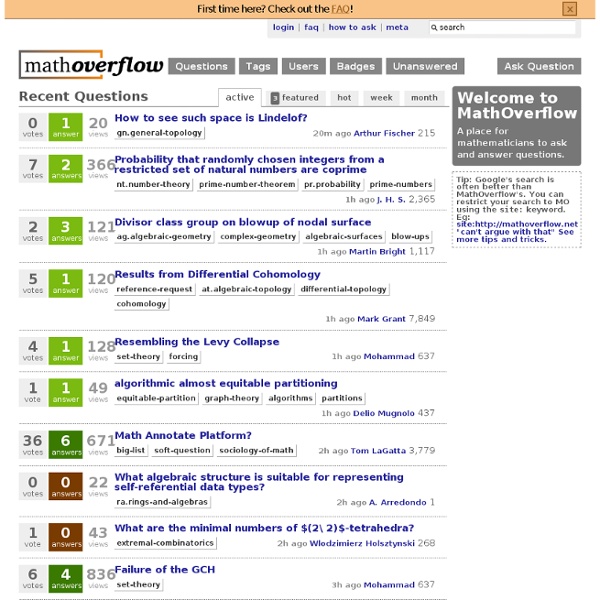Free conservation biology textbook: Conservation Biology for All
Oxford University Press makes conservation biology textbook by some of the world's most prominent ecologists and conservation biologists available as free download Conservation Biology for All provides cutting-edge but basic conservation science to a global readership. A series of authoritative chapters have been written by the top names in conservation biology with the principal aim of disseminating cutting-edge conservation knowledge as widely as possible. Important topics such as balancing conversion and human needs, climate change, conservation planning, designing and analyzing conservation research, ecosystem services, endangered species management, extinctions, fire, habitat loss, and invasive species are covered. Numerous text boxes describing additional relevant material or case studies are also included.
LabSpaces.net
The Skeptics Society Forum - Index page
Timeline: The evolution of life - life - 14 July 2009
Read full article Continue reading page |1|2|3|4 There are all sorts of ways to reconstruct the history of life on Earth.
Evolution: Education and Outreach - Free Access Available
As of January 2013 Evolution: Education & Outreach is a peer-reviewed open access journal published under the brand SpringerOpen. From 2013 onward all new articles published in the journal are freely and permanently available online for anyone, anywhere and at any time. This journal promotes accurate understanding and comprehensive teaching of evolutionary theory for a wide audience. Evolution: Education and Outreach addresses the question of why we should care about evolution by exploring the practical applications of evolutionary principles in daily life and the impact of evolutionary theory on culture and society throughout history.
An Error Occurred Setting Your User Cookie
This site uses cookies to improve performance. If your browser does not accept cookies, you cannot view this site. Setting Your Browser to Accept Cookies There are many reasons why a cookie could not be set correctly. Below are the most common reasons: You have cookies disabled in your browser.
Celebrating 50,000 Generations of the Long Term Lines
Front row: Ryan Quick, Chris Strelloff, and Brian Baer Standing: Justin Meyer, Jeff Barrick, Christian Orlic, James Dittmar, RohanMaddamsetti, Caroline Turner, Brian Wade, Mike Wiser, Neerja Hajela, Richard Lenski, Devin Dobias In Back: Zachary Blount Drawn by Zachary Blount
570-Million-Year-Old Fossils Hint at Origins of Animal Kingdom
New research suggests that fossils thought to represent some of the earliest multicellular life are instead single-celled, amoeba-like organisms. But even if they’re not quite full-blown animals, they may hint at how animals came into being. The 570-million-year-old Doushanto formation, first unearthed in South China in 1998, contains tiny clusters of cells that look similar to animal embryos. During the embryo stage of life, cells become organized into tissues and organs, one of the hallmarks of all animal species. Using a technique called x-ray tomographic microscopy, researchers captured an unprecedented level of detail in the Doushanto fossils, imaging internal and external features down to a ten-thousandth of an inch. They could even see individual nuclei within the cells, some of which were caught in the act of dividing.
Neanderthals, Humans Interbred—First Solid DNA Evidence
The next time you're tempted to call some oaf a Neanderthal, you might want to take a look in the mirror. According to a new DNA study, most humans have a little Neanderthal in them—at least 1 to 4 percent of a person's genetic makeup. The study uncovered the first solid genetic evidence that "modern" humans—or Homo sapiens—interbred with their Neanderthal neighbors, who mysteriously died out about 30,000 years ago. What's more, the Neanderthal-modern human mating apparently took place in the Middle East, shortly after modern humans had left Africa, not in Europe—as has long been suspected.


